Language:Japanese
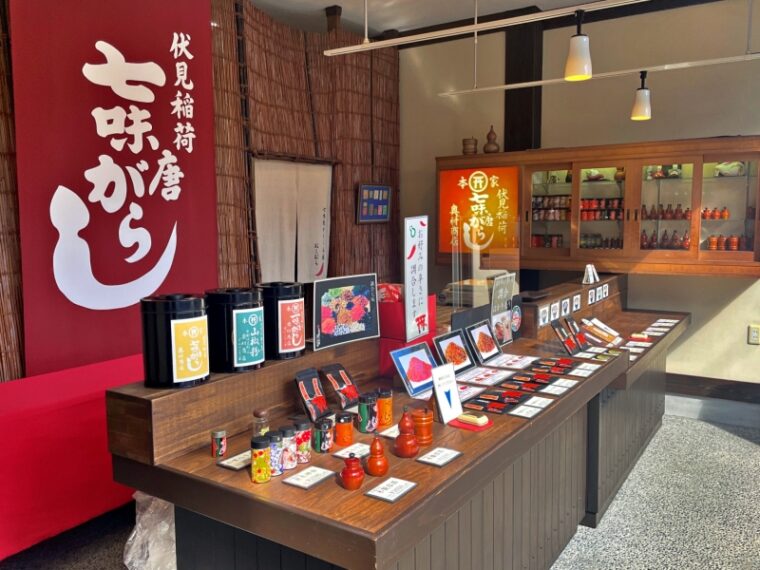
There are many shops in Kyoto that specialize in shichimi togarashi. Among them, one of the shichimi specialty shops that is popular with foreign tourists is Shichimi Togarashi Honpo Okumura.
“Shichimi Togarashi” is a unique Japanese seasoning made by blending seven types of spices with chili peppers as the main ingredient.
The shop is located a little north of the entrance to the back approach to Fushimi Inari Taisha Shrine, and is a long-established store with a history of over 90 years. The person in the photo is the third-generation owner, and it is one of the few shichimi specialty stores that continues to provide the same service it has offered since the store’s founding, such as mixing shichimi to suit the customer’s taste.
This time, I was able to see the Shichimi concoction on the spot, so I’d like to introduce you to the process.
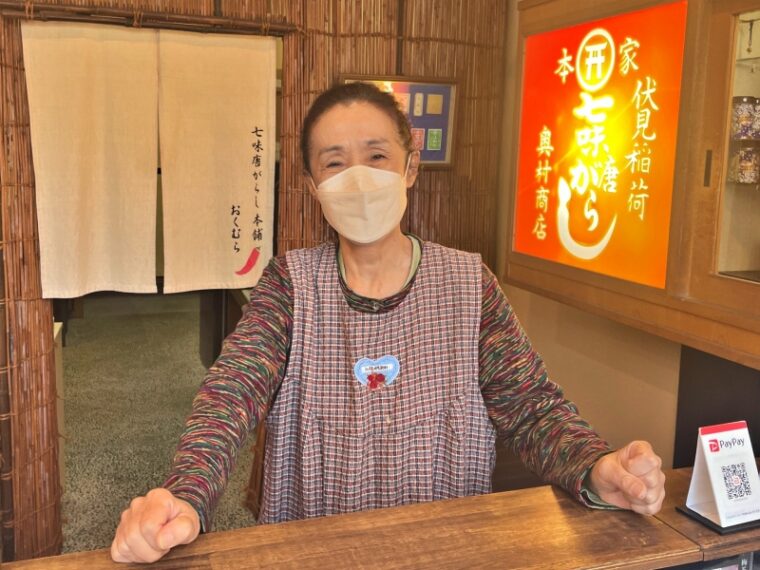
Shichimi pepper from “Shichimi Togarashi Honpo Okumura”
Shichimi Togarashi differs in the ingredients and proportions used in each store, so even if it is called “Shichimi Togarashi”, the taste and flavor will differ.
Okumura’s shichimi chili pepper is a bit strong in the Japanese pepper, which is what Kyoto people like, but it is well-balanced overall and has a flavor unique to the Fushimi area of Kyoto.
“Shichimi Togarashi” is often thought of as a spicy seasoning, but the shop’s Shichimi Togarashi emphasizes flavor rather than spiciness, so just sprinkle it on pickles or udon noodles to spread the aroma.
Ingredients for “Shichimi Togarashi”
The base of “Shichimi Togarashi” is a very spicy spice called “Ichimi Togarashi”, which is made from powdered chili pepper. However, “Okumura” is not only spicy, but also has a good aroma.
Okumura’s shichimi is a blend of chili pepper, chinpi, shiso, aonori, shirogoma, asanomi, and sansho.
- chinpi:dried tangerine peel
- shiso : perilla leaf
- aonori :green seaweed
- shirogoma : white sesame
- asanomi : hemp seed
- sansho : Japanese pepper
A carefully selected blend of these seven flavors is a tradition of “Okumura” that has continued for over 90 years.
Blend of “Shichimi Togashi”
Okumura’s Shichimi Togarashi is not just spicy.
Because we have inherited the concept from the time of our founding, “mixing according to the customer’s preferences,” we are able to create shichimi that even people who don’t like spicy food can enjoy the flavor.
In addition, you can adjust not only the spiciness but also the amount of “sansho” and “Asamomi” with the help of advice, so you can create your own “Shichimi Togashi.”
Below is the process of preparing the “slightly spicy” shichimi chili pepper that I requested.

Sub-seasonings of the golden ratio passed down from generation to generation
First, five types of secondary ingredients were taken out, excluding chili pepper and sansho. This is the base, and you can blend excluding chili pepper and sansho according to your order.
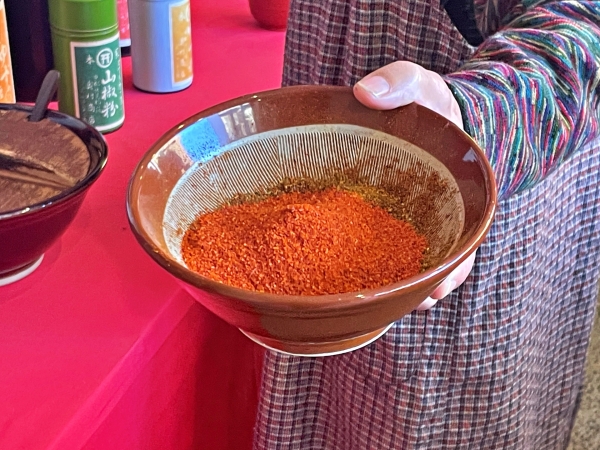
Adjust the spiciness by adding chili pepper
I asked for it to be “a little spicy,” so I got more chili pepper than the standard shichimi. “It looks spicy! But it smells good.”
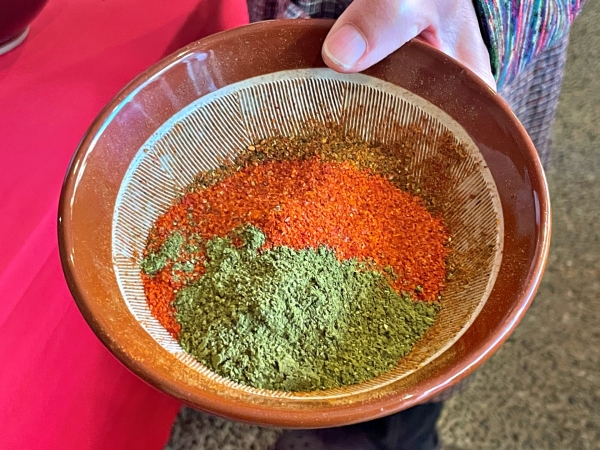
Japanese pepper powder unique to Shichimi specialty stores
This bright green and refreshingly scented sansho is made from powdered fresh sansho pepper, and is a specialty of shichimi specialty shops.
This can also be adjusted to your order.

Mixing after blending
Once the mixture is decided, mix it all at once. At this point, you’ll notice a very nice aroma.
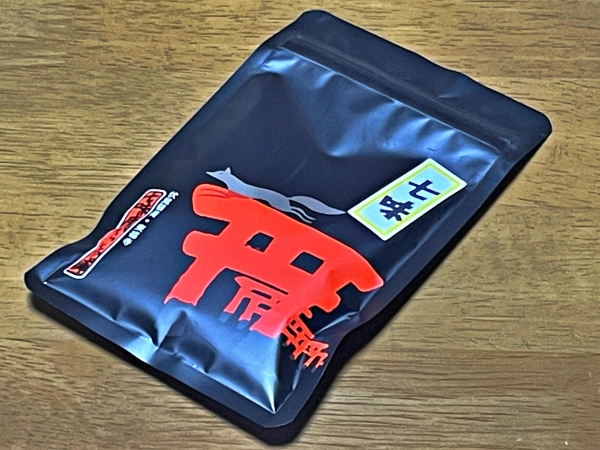
The finished shichimi can be stored in a special, sturdy zippered bag to prevent the flavor from loosing.
Sansho powder from a shichimi specialty store
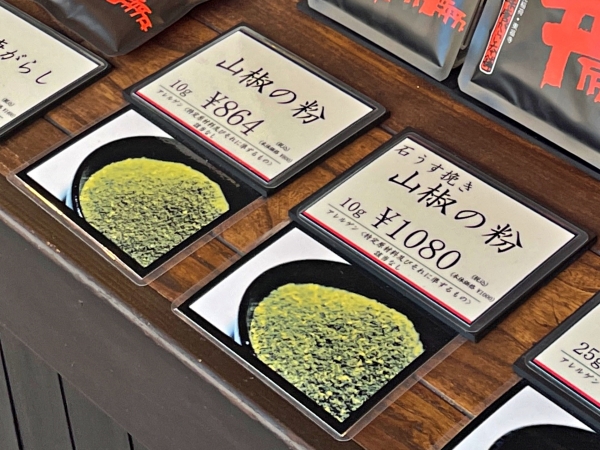
Most shichimi specialty stores sell both chili pepper and powdered sansho pepper. Even here at “Okumura,” they sell “Powdered Sansho Pepper” as a single item.
Some people seem to think that Japanese pepper powder is brown, but fresh Japanese pepper berries are green, and this powder is made to preserve their flavor!
Sansho is sensitive to light and high temperatures and will quickly discolor if exposed to them for long periods of time.
It goes well with Japanese “eel kabayaki” and “oyakodon”, so please try it.
“Yakimochi” with the addictive flavor of shichimi pepper and seaweed
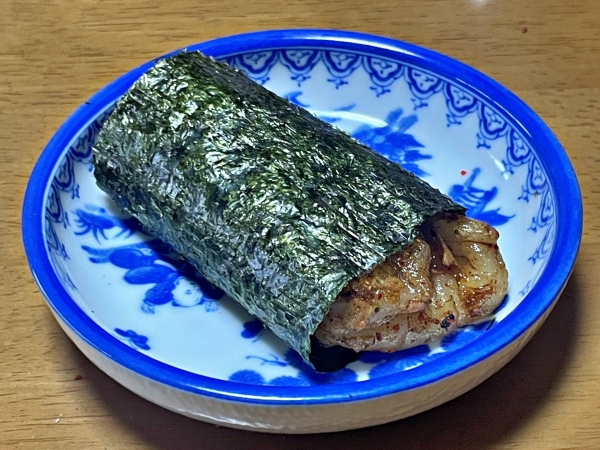
This “yakimochi” is a simple dish made by simply dipping grilled rice cake in shichimi soy sauce and wrapping it in seaweed, but it is similar to the “nure-okaki” sold at Terakoya Honpo, located on the back approach to Inari Taisha Shrine.
I recommend “Inari Futaba” for mochi. It is located south of “Shichimi Togarashi Honpo Okumura”. At this store, the mochi is pounded with a mallet every morning, so you can get the real, traditional taste of mochi.
Ingredients for special “Yakimochi”
- Shichimi Togarashi: Mix to your liking at Shichimi Togarashi Honpo Okumura
- Mochi: Small mochi from Inari Futaba (freshly made today)
- Soy sauce: Matsuno Shoyu Koikuchi Shoyu (Takagamine, Kyoto)
- Mirin: Kizakura (Fushimi sake brewery)
- Seaweed: Roasted seaweed
Mix two parts soy sauce with one part mirin, and add shichimi pepper to taste. If you knead the cooked rice cake into the sauce, it becomes a “nure-okaki” that feels like it has been marinated.
What is real “Shichimi Togashi”?
Shichimi chili pepper is a blend of spices unique to Japan, and most of the ingredients are also used in medicinal dishes, and are also used as “condiments”, which have the effect of enhancing the taste and aroma of dishes.
Shichimi chili pepper is a blend of spices unique to Japan, and most of the ingredients are also used in medicinal dishes, and are also used as “condiments”, which have the effect of enhancing the taste and aroma of dishes.
It is also interesting that different types of shichimi chili peppers have been created due to differences in food culture depending on the region, and you may discover something new by asking the store where you purchase it for recommendations on how to eat it.
In conclusions
I have heard that the regional characteristics of shichimi chili peppers are that Tokyo is spicy, Kyoto is flavorful, and Nagano is unique, but even in Kyoto, each region has its own characteristics.
All of them have an elegant taste that is unique to Japan and a mouth-watering aroma, so it is difficult to judge them as superior or inferior. If I had to rank them, it would be based on personal preference.
If I had to say, there aren’t many shichimi specialty shops like Shichimi Togarashi Honpo Okumura where you can mix the shichimi to your liking, so I think it has a rarity value.
For more information, please visit this website ⇒ “Shichimi Togarashi Honpo Okumura”
Access
Address: Fukakusa Inari Nakanocho 47, Fushimiku, Kyoto city, Kyoto, 〒612-0807, Japan
TEL/FAX : 075-641-2293

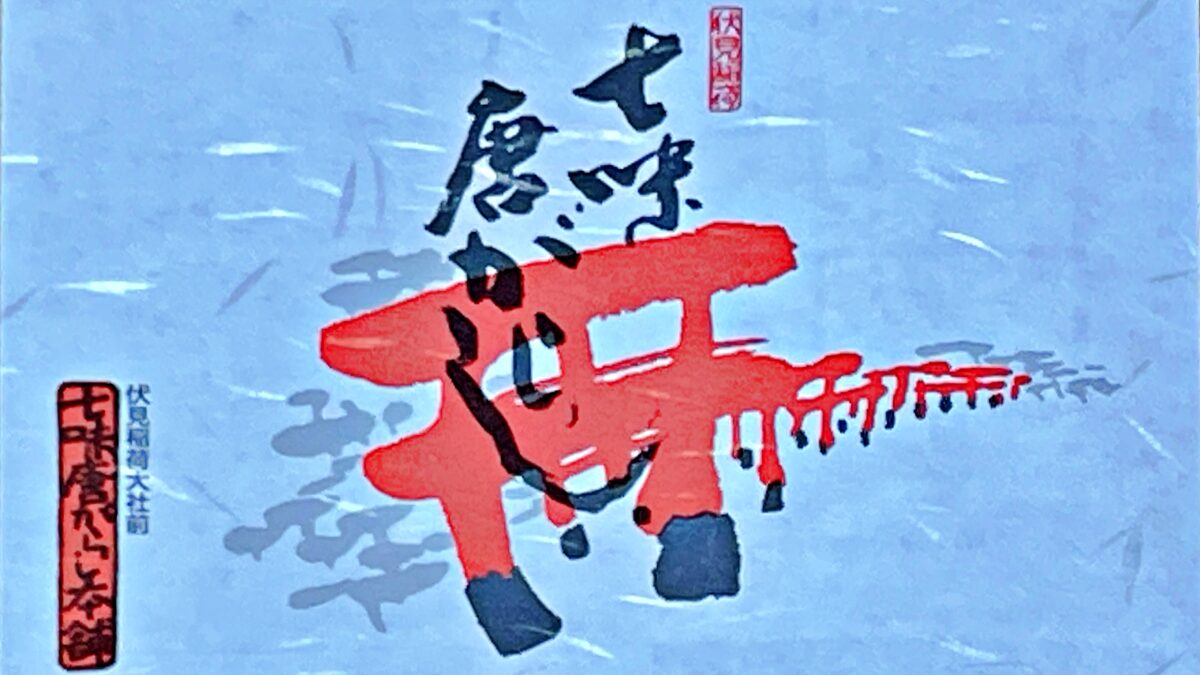
Capsaicin, which is contained in chili peppers, is effective in relieving constipation if consumed in moderation.
However, excessive intake can cause symptoms such as diarrhea, abdominal pain, lacrimation, nasal drip, urinary problems, and gastroesophageal reflux disease.